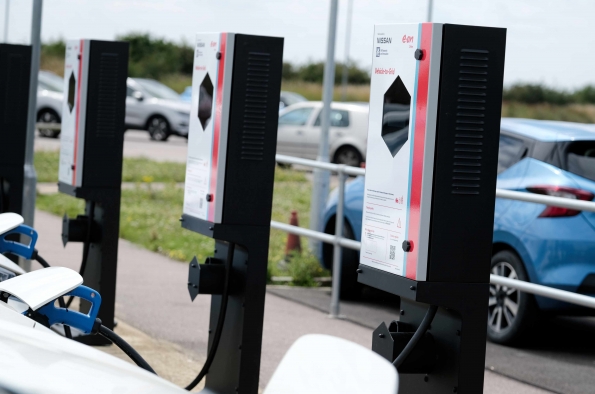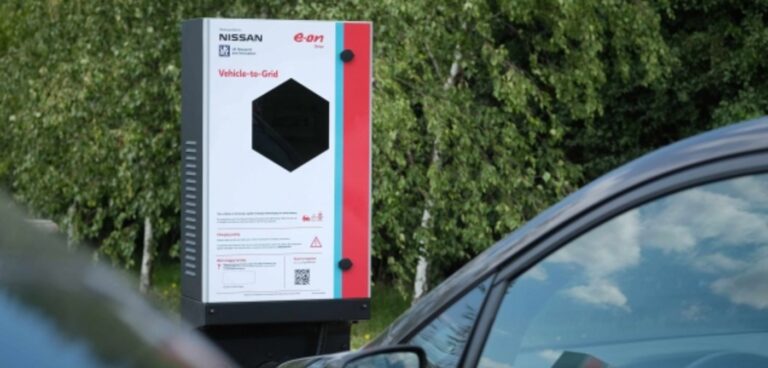The economic benefits of vehicle-to-grid (V2G) technology have been explored in a new study by carmaker Nissan, Imperial College London and EV charging solutions provider E.ON Drive.
A White Paper, published by the collaboration, said V2G technology can help deliver an overall UK power system cost saving of up to £885m per year; up to £12,000 per annum per EV in operation costs; and an annual saving of between £700 and £1,250 per vehicle.
What’s more, according to the study, the bi-directional charging capability of EVs could also contribute to lower emissions and help achieve long-term goals in relation to climate change. Its findings show a CO2 reduction of approximately 60 tonnes per year per EV.
Andrew Humberstone, managing director of Nissan Motor GB, said: “There is enormous potential in vehicle-to-grid to deliver huge savings, both in financial terms for electricity system operators and vehicle fleets, and in environmental terms, by significantly cutting CO2 emissions across the UK power system.”

The White Paper also addresses the challenges faced in the early days of V2G and focuses on creating a reliable business case in the context of evolving energy markets and regulations.
The trio of companies behind the study has now called for the introduction of incentives to accelerate widespread adoption of V2G charging systems.
Professor Goran Strbac, chair in electrical energy systems at Imperial College London, added: “Our research has demonstrated that V2G can provide very substantial economic benefits to the power system as well as reduce carbon emissions.
“This revealed that the additional flexibility provided by V2G fleets can considerably improve system efficiency and reduce investment in new low-carbon generation, while meeting national decarbonisation targets.”
Nissan, E.ON Drive and Imperial College are partners in a commercial fleet V2G project – e4Future, which aims to demonstrate how electric vans and cars can support the UK grid and provide a profitable and sustainable solution for business fleets.
The project is part of a wider V2G competition, funded by the UK Department for Business, Energy and Industrial Strategy and the Office for Zero Emission Vehicles, in partnership with Innovate UK.





